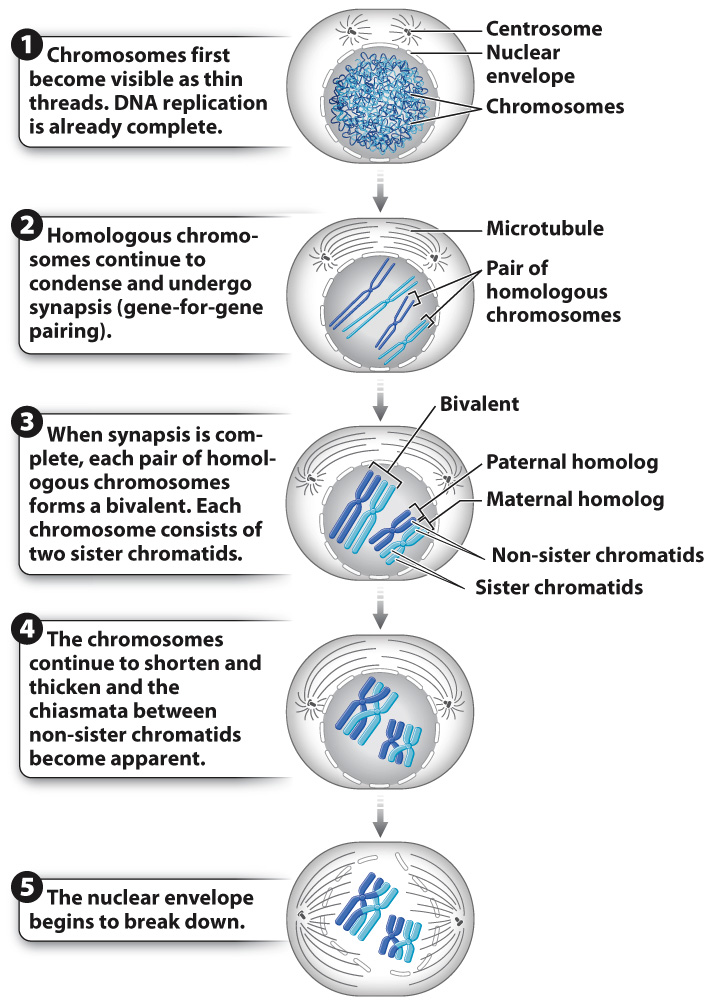Pairing of homologous chromosomes is unique to meiosis.
Like mitotic cell division, meiotic cell division follows one round of DNA synthesis, but, unlike mitotic cell division, meiotic cell division consists of two successive cell divisions. The two cell divisions are called meiosis I and meiosis II, and they occur one after the other. Each cell division results in two cells, so that by the end of meiotic cell division a single parent cell has produced four daughter cells. During meiosis I, homologous chromosomes separate from each other, reducing the total number of chromosomes by half. During meiosis II, sister chromatids separate, as in mitosis.
Meiosis I begins with prophase I, illustrated in Fig. 11.8. The beginning of prophase I marks the earliest visible manifestation of chromosome condensation. The chromosomes first appear as long, thin threads present throughout the nucleus. By this time, DNA replication has already taken place, so each chromosome has become two sister chromatids held together at the centromere.

What happens next is an event of enormous importance, and it is unique to meiosis. The homologous chromosomes pair with each other, coming together to lie side by side, gene for gene, in a process known as synapsis. Even the X and Y chromosomes pair, but only at the tip where their DNA sequences are nearly identical. Because one of each pair of homologs is maternal in origin and the other is paternal in origin, chromosome pairing provides an opportunity for the maternal and paternal chromosomes to exchange genetic information, as described in the next section.
Because each homologous chromosome is a pair of sister chromatids attached to a single centromere, a pair of synapsed chromosomes creates a four-
Quick Check 4 In a human cell at the end of prophase I, how many chromatids, centromeres, and bivalents are present?
Quick Check 4 Answer
In human cells at the end of prophase I, there are 92 chromatids, 46 centromeres, and 23 bivalents.